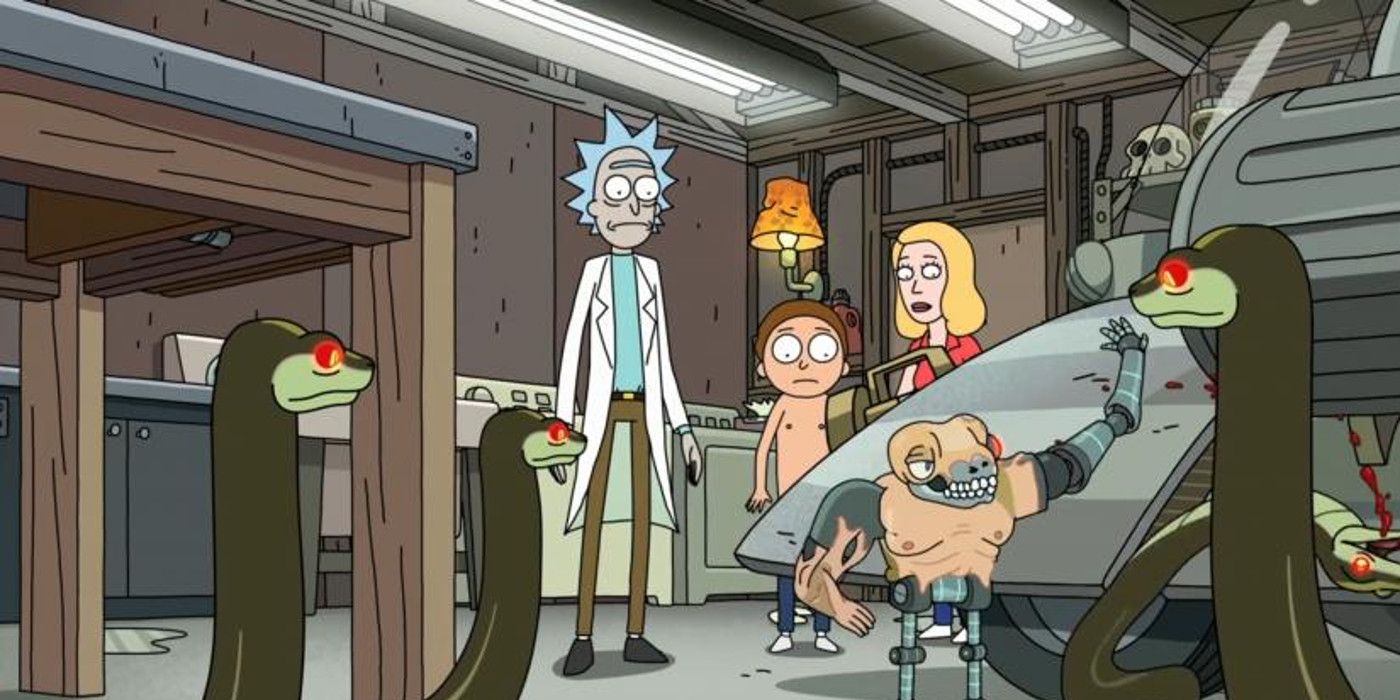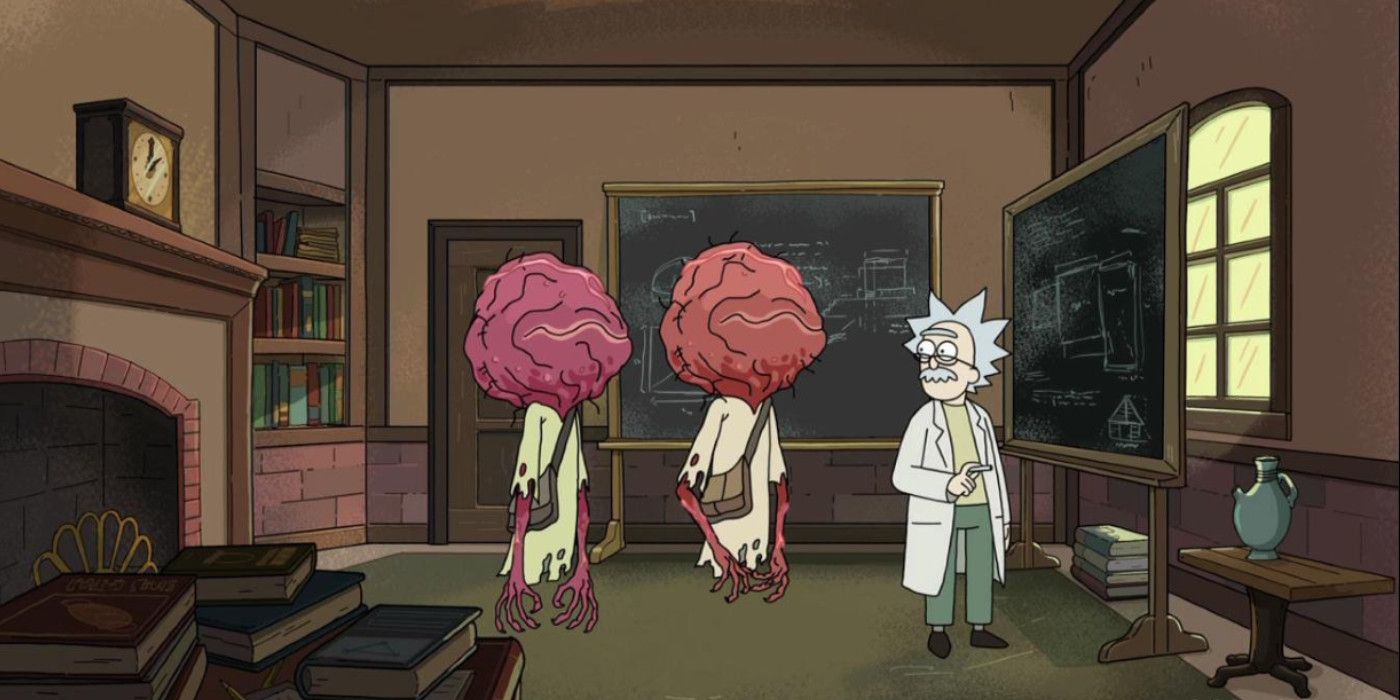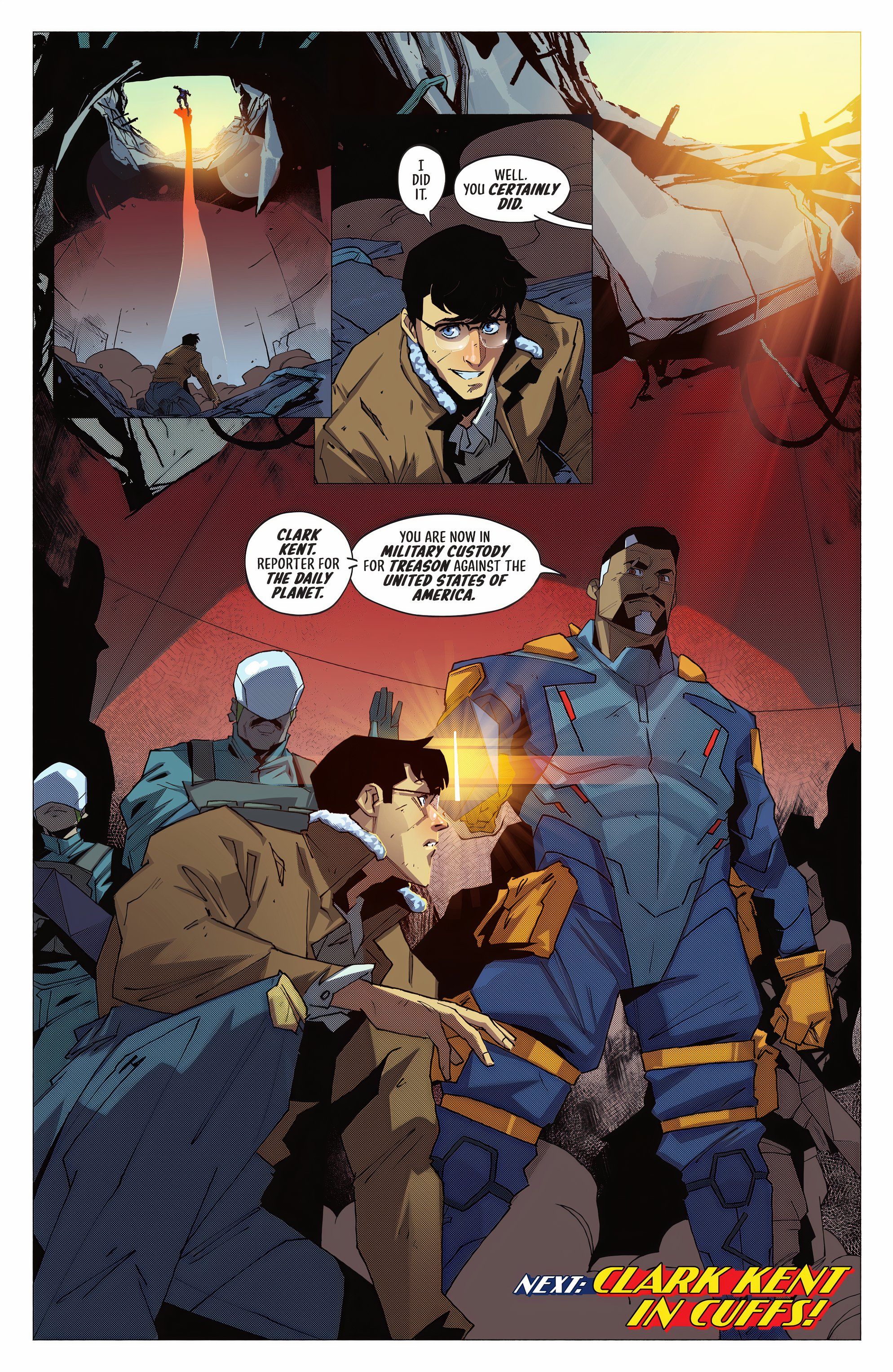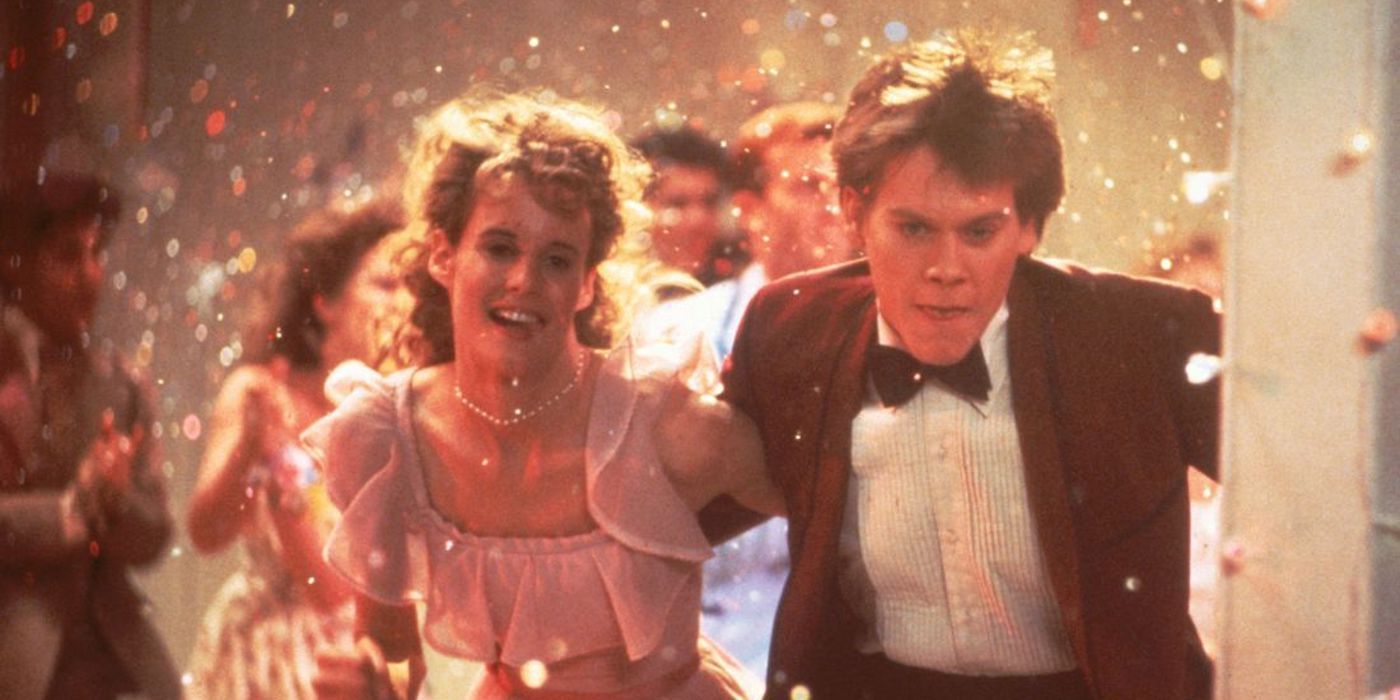The Terminator franchise has always struggled to make sense of its knotty chronology, something that Rick & Morty poked fun at when the show finally offered a time travel story in season 4. Rick & Morty has parodied pretty much every sci-fi convention in existence across its 5 seasons. The Adult Swim hit, which began life as a ribald Back to the Future parody, uses its sci-fi trappings to mock the genre’s familiar conventions and subvert the tropes that consistently reoccur throughout its many movies and TV shows.
As a result, some fans have been surprised by how few time travel adventures the titular duo have gone on. Admittedly, Rick & Morty’s season 2 premiere did address this (via a memorable parody of Stephen King’s The Langoliers), but the series has largely steered clear of time travel as a story device both before and since. However, the reason for Rick & Morty‘s approach to this is clearly outlined in “Rattlestar Ricklactica” (season 4, episode 5)—and it is one that a specific sci-fi blockbuster franchise could do with learning a lesson from.
Later in the season, during the action of the critically-acclaimed “The Vat of Acid Episode” (season 4, episode 8), Rick & Morty’s titular antihero Rick claims he didn’t respect time travel stories “or anything else Ant-man and the Wasp did,” and “Rattlestar Ricklactica” proves this storytelling approach right. It is hard to deny that Rick’s “Vat of Acid Episode” antics make him a hypocrite, but when it comes to avoiding time travel plots, the character is right on the money. After all, it only takes a few moments for the plot of “Rattlestar Ricklactica” to descend into absurdity once time travel becomes involved, and the episode’s spoof of the Terminator movies ends up not only proving that Rick & Morty is correct to avoid time travel, but also that the Terminator franchise could do with simplifying its indecipherable plots.
“Rattlestar Ricklactica”’s Time Travel Explained

The complex plot of “Rattlestar Ricklactica” starts with Morty being bitten by a space snake, feeling bad about killing it and trying to replace the reptile with one from the earth. This prompts a string of surreal misadventures that eventually culminate in robotic snake assassins being sent back in time to kill Morty before he can intervene in their civilization, much like the original T-800’s mission in 1984’s The Terminator. However, soon further robotic snake assassins are then sent back to protect Morty from the first set of killer snakes, only for yet another set of killer snakes to show up and kill these protectors, and so on.
This back-and-forth mimics the action of the Terminator franchise’s many complicated, timeline-hopping installments, but with one vital difference. Here, the time travelers are wordless snakes communicating entirely in hisses and, thanks to the truncated runtime of Rick & Morty’s 20-minute episodes, each time traveler appears in time to kill and replace another every few seconds. Soon, the Smith home is swarming with snakes modeled on Terminator 2: Judgement Day’s T-1000, the original T-800, and reptilian spins on every other iteration of the famous android assassin. This eventually results in Rick indirectly informing the Time Cops (the Langolier-spoofing bureaucrats last seen in Rick & Morty’s season 2 premiere), who set the space-time continuum right—but not before Rick and Morty are stuck cleaning up a massive mess left behind by the intersecting timelines.
Rick & Morty Proved Time Travel Is Too Complicated

The episode works because its breakneck pacing and absurd villains mean the story never takes itself seriously (something further helped by Jerry’s silly side quest to defeat a pair of floating shoes Rick designed). However, like season 4’s underrated outing “Promortyus,” the episode also serves to prove that many sci-fi cliches and tropes need to be questioned rather than thoughtlessly re-deployed. The episode’s plot just about makes sense upon a rewatch, but for the most part, its self-defeating string of overlapping timelines serves as evidence that Rick & Morty is right to not dwell on time travel when there are less explored sci-fi ideas like dimension-hopping that can get the creators out of narrative dead-ends without proving absurdly complicated in the long run. While time travel can seem like an appealing narrative device for sci-fi creators trying to find an easy end to a complicated story, it almost always proves more self-contradictory than it seems—as proven by the series that Rick & Morty spoofs in “Rattlestar Ricklactica”, the Terminator movies.
The Terminator Franchise Needed Rick & Morty’s Advice

The belated sequel Terminator: Dark Fate, which was released in mid-2019 only a few months before “Rattlestar Ricklactica” aired, proved that the franchise needed to take Rick & Morty‘s advice. Dark Fate rebooted a franchise continuity that had already been rebooted one movie earlier in Terminator: Genisys, recasting Sarah Connor as a returning Linda Hamilton (replacing Emilia Clarke from Genisys) and reintroducing Arnie as a fourth iteration of the same (but different) titular character. Dark Fate’s plot offered a fourth version of the Terminator timeline and proved that the series was still willing to try new things, but floundered without any concrete canon to base its story on. The sequel’s story was inevitably a mess, as it was unclear which elements of the original movies were still relevant and which had been retconned, something that Rick & Morty’s parody of the movies warned would happen once writers began toying with timelines.
The complicated story of Terminator: Dark Fate proved Rick & Morty was right to steer clear of time travel for anything more substantial than light-hearted laughs, although that was not the only element of the movie that prompted comparison with the Adult Swim series. One reviewer noted that Arnold Schwarzenegger’s Carl, a Terminator who retired after completing his mission and became a suburban drape salesman, was like something out of an episode of Rick & Morty, although this jab was only partially accurate. The premise of the Terminator becoming a stepdad was mined for comedy before Terminator: Dark Fate tried to take the idea seriously, but it was in a Robot Chicken sketch rather than a Rick & Morty outing. Still, Rick & Morty nonetheless proved how misguided the Terminator’s experiments with timeline-revising storytelling were in “Rattlestar Ricklactica.”





